| FDA
> CDRH > Center Leadership
Center Leadership
Each of the former directors and acting directors was asked the following question, "What challenges did you face during the time you were Bureau / Center director or acting director?"
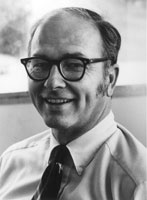 David Link David Link
Director, Bureau of Medical Devices and Diagnostic Products
Director, Bureau of Medical Devices
10/26/75 - 6/16/80
Here are 3 challenges we had at BMD, and how we met them.
1. Hiring good people. We looked for people with strong science or engineering backgrounds because of the nature of devices. We didn’t look for people in the agency, because they often had an attitude critical of the industry and often came with preconceived notions that industry was bad and it was their role to punish industry.
2. Recognize that the Bureau had the responsibility to get safe and effective products to the market as much as it was to keep unsafe and ineffective products off the market. We did this by expeditiously processing submissions. 510(k) submissions were routinely reviewed in 90 days although we had no obligation to do so. The 90-day requirement was an industry requirement. We also didn’t require information that was not relevant to the review process, a center characteristic that seems to have been lost over the last two decades as review times grew to 180 days or more.
3. Make the program as transparent as possible. This was done by trying to explain to industry what the requirements in the regulations meant so they could meet them. As an example, when the first GMP regulation was proposed, we held several conferences around the country to explain the regulation and permit industry to voice their concerns and questions. In addition, the Office of Small Manufacturers Assistance provided a mechanism for industry to have questions answered. The Office also published many useful documents, explaining regulations and requirements. I think that the Device Industry always felt that the Office provided a useful purpose. The Bureau always had an open door to resolve contentious issues.

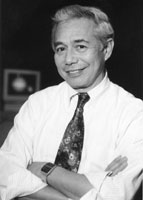 Victor Zafra Victor Zafra
Acting Director and Deputy Director, Bureau of Medical Devices 1978-1982
I faced challenges including: successfully revising the medical device investigational device exemption regulation...; resolving the contentious issues around the approving alpha feto-protein test kits for neural tube defects; approving intraocular lens; approving extended wear soft contact lens for non-aphakic use; and approving the first monoclonal antibody in-vitro diagnostic test kits.

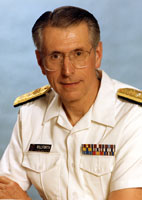 John Villforth John Villforth
Director, Bureau of Radiological Health 1969-1982
Director, National Center for Devices and Radiological Health and
Director, Center for Devices and Radiological Health 1982-1990
(Retired from the PHS with the rank of Assistant Surgeon General [Rear Admiral])
1. The first challenge I faced as the Director of the Bureau of Radiological Health (BRH) was in 1970, which was before BRH became part of FDA. President Nixon issued an executive order that established the Environmental Protection Administration (EPA). Because of this order, approximately half of our resources were transferred into the new organization including facilities, equipment, projects and most important - people. The trauma of wrenching people apart from their projects was a professional setback to many of the staff and certainly destroyed the momentum of their research. It was also done at a time when I felt many of the people who were supposed to be unbiased mediators (e.g., OMB staff) in the process of dividing up the resources were later given senior positions in EPA. Fortunately because there were so many good people who were committed to the public health, it somehow worked. The EPA program went on to be a respected organization in the radiological health aspects of environmental radiation problems. Those people who remained in BRH carried out the mandate of the Radiation Control for Health and Safety Act (RCHSA) of 1968 in an effective manner.
2. The next challenge I faced came after the 1970 radiological health split. I had the responsibility for the remnants of the Bureau that were assigned to the FDA. BRH had three major mandates under RCHSA. First, it called for the establishment of federal performance standards to protect the public from unnecessary exposure from radiation emanating from electronic products such as medical x-ray machines. Also, RCHSA required user training and education about these sources as well as the controls on the equipment through standards. This meant that there was an aggressive educational component in BRH as well as an effective compliance and enforcement effort; ensuring that the equipment emitting these radiations were in compliance. I wrongly perceived that FDA was so enforcement minded that they would not allow BRH's educational efforts to flourish. BRH went into FDA with considerable unease. Fortunately, I learned that there were educational efforts in FDA - particularly in the Bureau of Foods - and BRH was able to perform its responsibilities. I attributed this acceptance to the awareness of FDA Senior Staff during the early 1970's. With the commitment of BRH staff to public health, we convinced many of the FDA Senior Staff that educating users was as important as compliance and enforcement in protecting the public health. Commissioner Alexander Schmidt made the following wise statement during a debate at one FDA staff meeting over the roll of education versus enforcement, “Make no mistake about it, FDA is an educational organization and we get our job done through education of the users and manufacturers. But, we put slow learners in jail!" Comments like that convinced me that we had a home in FDA.
3. Another challenge I faced was in 1982 when FDA's Bureau of Radiological Health combined with the FDA's Bureau of Medical Devices. The combined Bureaus eventually became the Center for Devices and Radiological Health (CDRH). The device legislation was very new (1976) and the very nature of the legislation placed demands on the Agency to follow what was prescribed in the new law. There was no room for latitude as there was in the more discretionary RCHSA. And the medical device program did not have the necessary staff to carry out its responsibilities. Consequently, there was a risk that some of the BRH resources and staff would be diverted from the radiation activities into the device effort and possibly compromise the protection of the public from radiation sources. Some diversion did take place, but I was very pleased that the combined staff rose to the occasion and did a superb job even though the combined programs were not adequately funded. The first Congressional hearing after the reorganization was about, "FDA’s neglected program." It didn't take long before Congress had a series of hearings on the device problems. However, in spite of these concerns, the staff did their job well and the combined organization became stronger. The whole was greater than the sum of its parts.

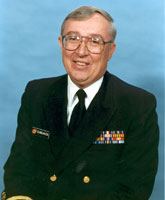 Walter Gundaker Walter Gundaker
Acting Director, CDRH 1990-1991
The biggest challenge during my relatively short tenure as Acting Center Director was to deal with the management style and interests of the new FDA Commissioner. Dr. David Kessler came on board in December 1990 and he had different ideas about the regulation of medical devices and no program area was considered to be untouchable. Fortunately, Jim Benson was Deputy Commissioner and provided a valuable cushion.
Another much easier challenge was keeping the Center running immediately after the retirement of John Villforth who headed the organization for many years. Having been John's Deputy for several years and with the strong support of the Center staff, we were able to maintain a high degree of efficiency and spirit during the interim period before a permanent Center Director was appointed.

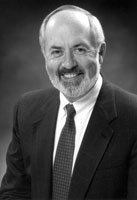 James Benson James Benson
Director, CDRH 1991-1992
I think one of the greatest challenges, historically was the implementation of the original device law, which was well under way before I became CDRH Director. I first got involved when the Bureau of Radiological Health and the Bureau of Medical Devices were merged in 1982. I had been Deputy Director of Rad Health and became Deputy Director of CDRH in 82. At that point, John Villforth and I faced two challenges: to truly merge the two bureaus and to continue to implement the still relatively new law. The highlight of that process was developing a program that took into account the concerns of the Center’s stake holders, e.g. the Congress, consumers the clinical community, the industry, etc., while at the same uniting the staff of the two centers to continue to implement both the device and rad health laws. I think we were successful at merging the two staffs. But there were to be problems ahead with implementing the law.
Congress, as it does, conducted a series of oversight hearings beginning around 1980 and continuing to the present. Many changes have taken place in the device law and how it was implemented as a result of congressional oversight. For example, the pacemaker leads hearings led to the implementation of the MDR reg. Heart valve hearings led to post market-surveillance. The Congress has a way of continuing to load the agency with authority, but, unfortunately, seldom appropriates enough money to implement that authority. This problem of under funding the agency relative to its responsibility seems to be a never-ending one. User fees will help, but I see the problem continuing.
In 1987, I was asked to become Deputy Commissioner (an offer that I couldn’t refuse). I was away from CDRH for three and a half years, one year of which I served as Acting Commissioner. It was during that year, 1990, that perhaps the greatest challenge to the Center was initiated. It started with the generic drug scandal, a low point in FDA history. Congressional oversight, combined with IG investigation ended with several FDA employees going to jail and the agency making major changes to regain respect in the community. So, how does that affect CDRH? Congressman Dingell, after finishing with generic drugs, decided that his next target would be devices! He immediately launched an investigation to see if wrongdoing could be found in CDRH. In the meantime, after holding down the fort following the generic drug debacle, I returned to CDRH in 1991 as Director, in the mist of yet another Dingell investigation. It got so intense that we actually gave the principal investigator an office in CDRH to save our staff from commuting downtown for mandatory interviews. As it turned out, no “wrong doing” was found, but the attention of CDRH staff had been diverted away from their job as a result of the investigation. As an example of the impact, no PMAs were approved during the year of the investigation. Many on the staff felt that they were being accused of doing something wrong, although none were. The challenge was to restore morale and to get our job done.

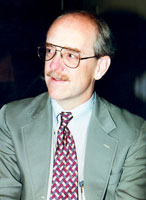 D. Bruce Burlington M.D. D. Bruce Burlington M.D.
Director, CDRH 1993-1999
The changing of the guard with a number of retirements of Commissioned Core Officers from the Rad Health program just at the time we were implementing the Mammography Quality Program including working to understand how we should approach digital mammography from a scientific and review point of view. By maximizing use of the remaining Rad Health folks and recruiting from elsewhere in the PHS, as well as putting together cross office/division teams to tackle the problems, we were able to effectively meet both challenges.
The initial questions on what regulatory approach should the Center take with regard to reprocessing of devices were raised during this period. We recognized that reprocessing of durable devices long antedated the Device amendments yet the Act was silent about this practice. Further, we knew that the new questions raised complex administrative allocation of resources, patient safety, jurisdictional and procedural questions. The fact that now more that 7 years later this is now in the news underscores the difficulty of the issue.

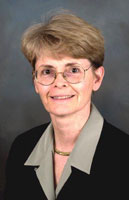 Elizabeth Jacobson, Ph.D. Elizabeth Jacobson, Ph.D.
Acting Center Director, 1993, 1999
While at CDRH, I served as acting Center Director on a number of occasions, most notably during the “interregnums” following Mr. Benson’s retirement and Dr. Burlington’s resignation. As Deputy Director for Science, and as acting Center Director, my job was to work to ensure that CDRH’s regulatory decisions regarding medical devices and radiation-emitting consumer products were fully informed by the best available science. When Mr. Benson retired, for example, I chaired a department-wide effort to organize an international dialogue on the safety of dental amalgam with policy-makers and researchers from Canada and Europe, led the US delegation to a resulting World Health Organization (WHO) Consultation in Geneva, and served as an expert advisor to the dental amalgam working group established by the European Commission. These efforts resulted in public health advisories that allayed public apprehension by putting risks and benefits in context.
I also worked to promote public health and safety through the use of national and international voluntary consensus standards. For example, upon Dr. Burlington's resignation, I assumed the chair of the Global Harmonization Task Force (GHTF) and guided that organization to several "firsts:" the first twelve harmonized guidance documents were endorsed, the first GHTF website went on-line, the first formal working agreement with the International Organization for Standardization (ISO) was entered into to provide a coordination of efforts between the two organizations, and the first talks were held to provide for the adoption of specific operating procedures for the future operations and work of the GHTF.
I also looked for ways to leverage CDRH’s efforts by working to develop public health partnerships with other organizations. For example, I chaired the Agency’s Cooperative Research and Development Agreement Review Board. I was also instrumental in developing the first-ever formal working agreement between FDA and an NIH institute to open lines of communication among FDA staff, NIH staff and NIH's grantees and contactors about research issues that could impact the premarket review of products. The FDA partners to this agreement included CDRH, CDER, and CBER. Under the agreement, FDA joined with NIH’s National Institute for Dental and Craniofacial Research to improve the quality of pre-clinical and clinical research used to evaluate oral health care products and thus reduce the time between the research and development phase and commercial availability of important new products.

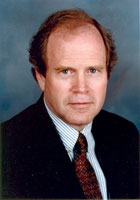 David Feigal, M.D., MPH David Feigal, M.D., MPH
Director, CDRH, 1999-2004
1.) The Center like other medical product groups had divided the oversight into highly specialized groups with not very effective links between premarket, compliance, postmarket and laboratory programs.
A strategic plan was developed by the senior management of the Center, (The Center Director, Center Deputies, and Office Directors) which developed a vision for the Center that emphasized the importance of everyone being aware of the Total Product Life Cycle. The In Vitro Diagnostics Office was created as a “laboratory” where one group would have responsibility for all aspects of their products. Programs to encourage cross training, particularly for new staff was instituted.
2.) The Center had significant resource problems having lost of nearly 15% of its staff and having bare bones budgets.
I spent a good deal of time speaking with trade associations, the four Commissioners or acting Commissioners, with our own staff and others to make the case that CDRH could be more effective with additional resources. Although an earlier attempt at user fees in the mid 1990’s had been defeated by groups representing small manufacturers, during my tenure, the negotiations for a Medical Device User Fee Act were successfully concluded and were just beginning implementation at the time I left. The user fee program should be able to assure stable resources in coming years.
3.) Training and recruitment had been particularly hard hit by budget austerity. Staff increasingly were not able to participate in continuing education programs or scientific meetings in their field.
To begin, the Staff College was strengthened and increased the number of its offerings. I created new programs including the Medical Device Fellowship, and advanced programs for CDRH staff taught on-site at CDRH with courses offered by Georgetown University, Virginia Tech, and Montgomery College. As part of the Center’s Strategic Plan we asked the Center’s leaders and managers to make CDRH a “magnet for excellence” to attract and develop the best regulatory scientists and support staff. The fellowship program attracted a broad range of scientists to join us from undergraduate engineers to physicians in clinical training to faculty from departments of surgery and anesthesia joining CDRH for sabbaticals.

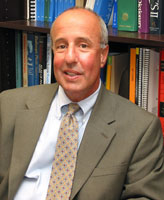 Daniel Schultz M.D. Daniel Schultz M.D.
Director, CDRH 2004 - present
Three of our major challenges in CDRH have been and continue to be strengthening our postmarket program, carrying out our responsibilities under the Medical Device User Fee and Modernization Act (MDUFMA), and responding to the new regulatory challenges posed by the increasing use of medical devices in the home.
In the postmarket area, we must see to it that we have a robust and effective program to quickly detect and analyze problems that arise with devices after they are marketed. We must develop a "culture of collaboration," in which all components of the Center are involved in helping us deal with postmarketing problems. And we must be sure to feed back what we learn from our postmarket actions into our evaluation of new devices before they are marketed.
Implementing MDUFMA in the years to come will require us to extend the "culture of collaboration" beyond FDA. Increasingly, we will consult with the medical community, academia, patient groups and the industry to seek their views on how we can improve our review processes. And to help us deal with rapid advances in science and medical technology, we will make greater use of outside expertise in helping us to evaluate new products. The goal is to make our reviews of new products as clear, prompt, predictable and effective as possible.
Over the next decade, more and more medical devices will be used in home settings. This trend will be fueled by the increasing cost of institutional medical care, and it will be enabled by advances in technology that will make devices smaller and easier to use. Increased home use will mean new challenges for us as regulators. To respond effectively to these changes, we will have to focus greater attention on labeling and training for users, on "human factors" in device design, and on developing a more effective system for soliciting, collecting and analyzing adverse event reports from patients and caregivers.


Updated August 3, 2006 |




![]()